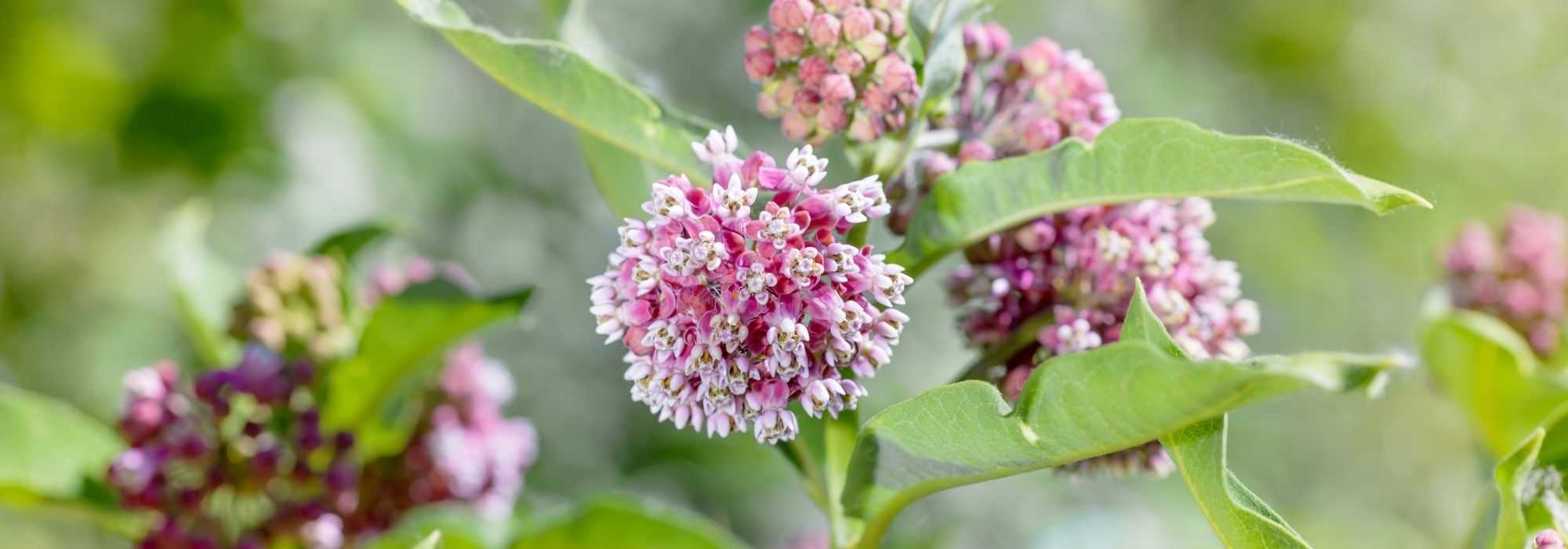
Pairing swamp milkweed or Asclepias
Ideas and inspirations for pairing Asclepias
Contents
The Milkweed deserves to be cultivated more widely, both in pots and in the ground. Perennials, they bear a multitude of small star-shaped flowers throughout the summer, gathered in umbels. Depending on the variety, they come in white, mauve, pink, or orange, and require little maintenance once planted in the sun.
Ranging in height from 40 cm to 1.5 m depending on the variety, place them in full sun for generous flowering. Once established, they grow quickly, forming clumps of long upright stems that produce lovely light umbels of star-shaped flowers from June to September. They pair perfectly to create varied themes in the garden, whether exotic, rockery, naturalistic, and many more.
So, discover some associations to structure in order to make the most of the flowering of milkweeds with the ideas below.
In a naturalistic garden
Pair theAsclepias incarnata, with star-shaped flower spikes, bright pink in colour and lightly scented, in a naturalistic and monochrome pink and purple border. In the foreground, plant hardy geraniums such as ‘Blue Sunrise’, ‘Eureka Blue’, or the timeless ‘Rozanne’ to create a carpet of greenery. In the middle ground, mix in medium perennials like agastache ‘Blue Boa’ or ‘Summer Love’®, which produce stunning spikes. You can enjoy the highly aromatic foliage of ‘Blue Boa’ for making an infusion. Next to it, place sage nemerosa ‘Serenade’ or ‘Ostfriesland’, or purple rudbeckias like ‘Fatal Attraction’ or ‘Pica Bella’. At the back of the border, install tall perennials like Perovskia ‘Blue Spire’ or ‘Blue Steel’ and grasses to add lightness with Pennisetums orientale.
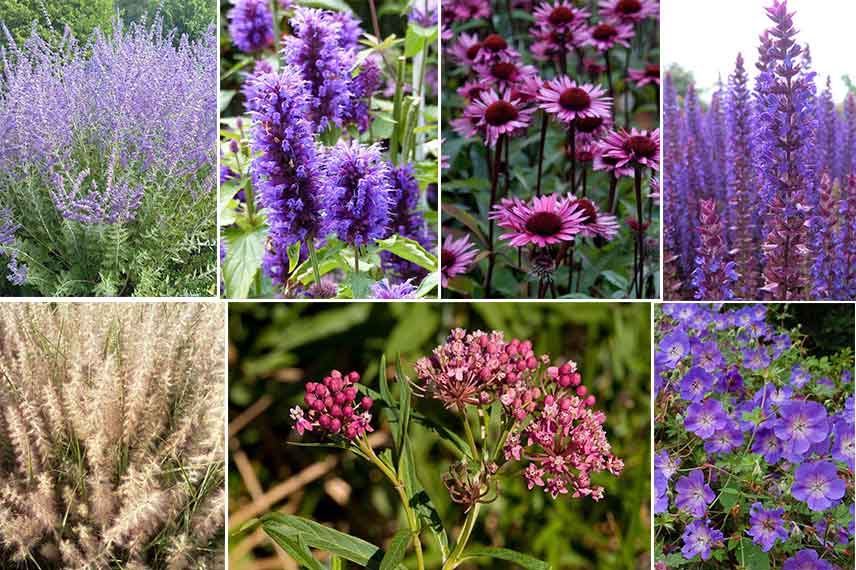
Perovskia ‘Blue Spire’, Agastache ‘Blue Boa’, Echinacea ‘Fatal Attraction’, Salvia ‘Ostfriesland’, Pennisetum orientale, Asclepias incarnata (© P.Alexander-Domaine Public) and Hardy geranium ‘Rozanne’
Looking for inspiration to create a naturalistic garden? Discover our advice sheet 10 emblematic perennial plants for naturalistic gardens.
Read also
Asclepias: sowing, planting and careIn an exotic garden
Grow original shapes and colours to give your garden an exotic style. The Asclepias curassavica, with its orange and bright orange flowers, blooms from June to November, and the Asclepias tuberosa, featuring star-shaped vermilion flowers from July to September, are perfect for this bed that evokes travel. Pair them with Crocosmias ‘Lucifer’, which ignite a floral display with their large spikes of vibrant red flowers. Finally, combine phormiums with original colours such as ‘Black Adder’, with linear leaves of almost black purple; ‘Rainbow Sunrise’, with bright pink leaves in the centre, edged in bronze on the outside and olive green on the inside; or ‘Golden Ray’, with long, bright green and yellow leaves. If you have enough space and want to enhance the jungle effect, plant some cannas at the back of the bed to add large foliage.

Canna striata, Crocosmia ‘Lucifer’, Phormium ‘Golden Ray’, Phormium ‘Rainbow Sunrise’, Asclepias curassavica and Phormium ‘Black Adder’
How to create a tropical garden? Here’s the answer with our advice sheet Exotic garden: all our tips for designing it.
Discover other Asclepias
View all →Available in 3 sizes
Available in 1 sizes
Available in 1 sizes
Available in 1 sizes
Available in 1 sizes
Available in 1 sizes
Available in 1 sizes
Available in 1 sizes
Available in 1 sizes
Available in 1 sizes
On the edges of a pond
The Asclepias incarnata, ‘Ice Ballet’ and speciosa thrive in moist soil, so why not plant them by the pond? Pair them with beautiful perennials like Eupatorium maculatum ‘Phantom’ with its tall, delicate stems adorned with lilac corymbs, or loosestrifes ‘Swirl’, featuring long spikes covered in small pink flowers. Complete the pond’s edge with ligularias dentata, boasting bright yellow flowers, or Cirsiums rivulare ‘Atropurpurem’, with long stems covered in red heads. These hardy plants will thrive in a moist environment, adding verticality and colour around the pond. With every visit, you can enjoy the vanilla scent of Asclepias incarnata.
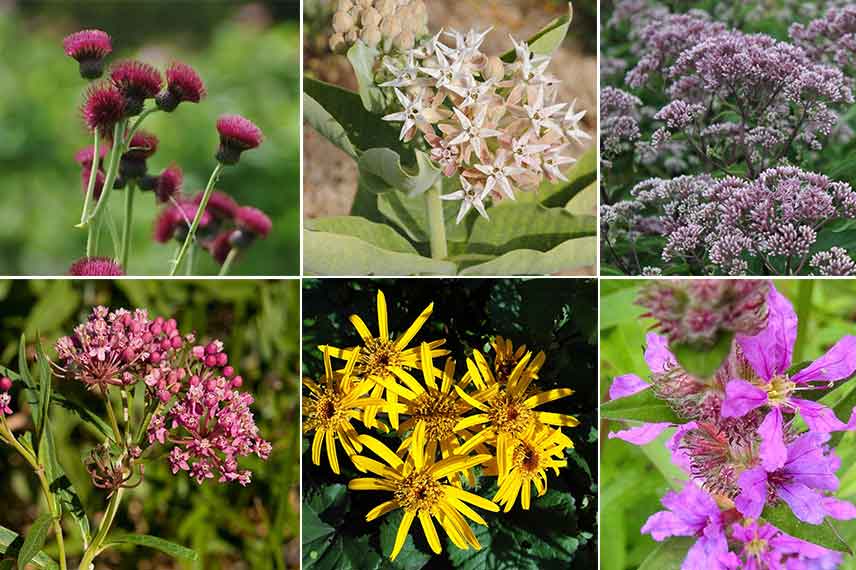
Cirsium rivulare ‘Atropurpureum’, Asclepias speciosa, Eupatorium maculatum ‘Phantom’, Asclepias incarnata (© P.Alexander – Public Domain), Ligularia dentata and Lythrum ‘Swirl’
In addition to flowering around a pond, bring colour into the water with our advice sheet Pond: 10 aquatic plants, submerged or floating.
Read also
Growing milkweed in potsIn a rock garden
Whether sloped or flat, small or large, create a rockery with plants that thrive in dry conditions and appreciate poor soil. Carpet the ground with houseleeks that form graphic rosettes and carpeting sedums in a myriad of colours, depending on the seasons. Accent this carpet of greenery with Asclepias fascicularis, reaching 40 cm tall with white flowers tinged with purple, and grasses like carex, in various shades such as testacea ‘Prairie Fire’, a coppery orange, or clumps of blue fescue, grey-blue in colour. Also add small tufts of pink with Phlox subulata, known as moss phlox, such as ‘Candy Stripes’ or ‘Scarlet Flame’.

Sempervivum, Carex testacea, Phlox ‘Candy Stripes’, Asclepias fascicularis, Sedum spathulifolium and Festuca glauca
Beginner gardener looking to create a rockery, discover our advice sheet Creating a rockery: our tips for success.
In a container garden
On a balcony, terrace, patio, or courtyard, set up a series of pots that will add volume and colour. With its height of 80 cm, the Asclepias curassavica, flowering from June to November, is easily grown in a large, deep pot. Remember to place a drainage layer at the bottom of the pots. Pair the milkweeds with purple and white scaevolas, as well as lantanas. To bring verticality to this ephemeral green corner, dare to use ipomea that climbs on a trellis and an Abutilon megapotamicum, a bush covered in yellow bells surrounded by a bright red calyx. This will create a collection of pots with plants of different shapes, heights, and colours to brighten your outdoor space.
Dare to grow Asclepias syriaca, also known as parakeet grass, parakeet tree, or cotton grass. In the ground, it can be invasive with its sucker roots, so limit its growth by cultivating it in a large container. Valued by pollinators for its pink melliferous and nectariferous flowers, subtly scented with vanilla, it produces spiny fruits shaped like parakeets at the end of the season. Hang them around a basin filled with water to attract visiting birds!
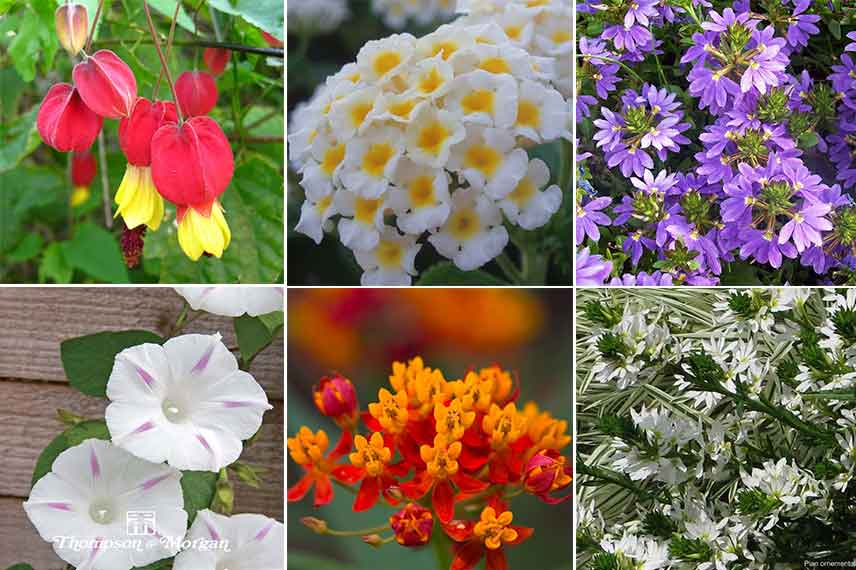
Abutilon megapotamicum, Lantana camara ‘Evita White’, Scaevola ‘Surdiva Bleu’, Ipomea, Asclepias curassavica, and Scaevola ‘White Wonder’
For further reading
Feel free to check our advice sheet, Asclepias: sow, plant and care for.
- Subscribe!
- Contents
![[asclepiade-associer] [asclepiade-associer]](https://www.promessedefleurs.ie/blogwp/wp-content/uploads/2021/10/asclepiade-associer.jpg)































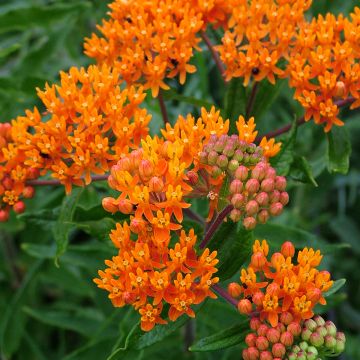



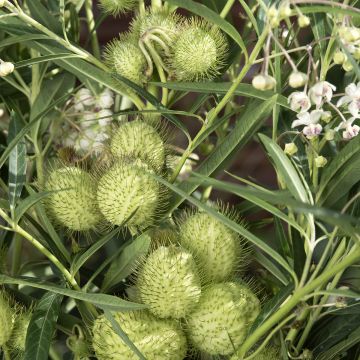
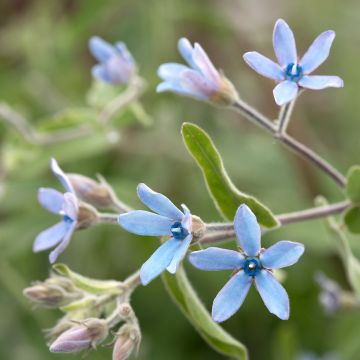
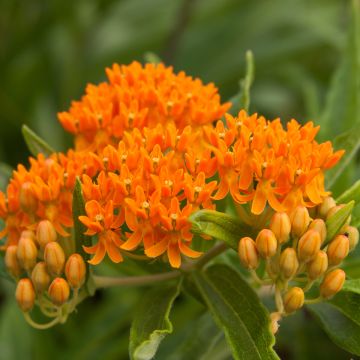
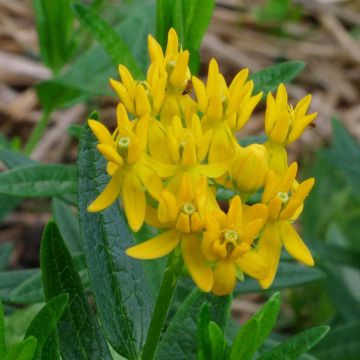

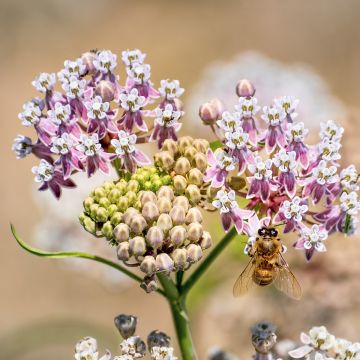
Comments